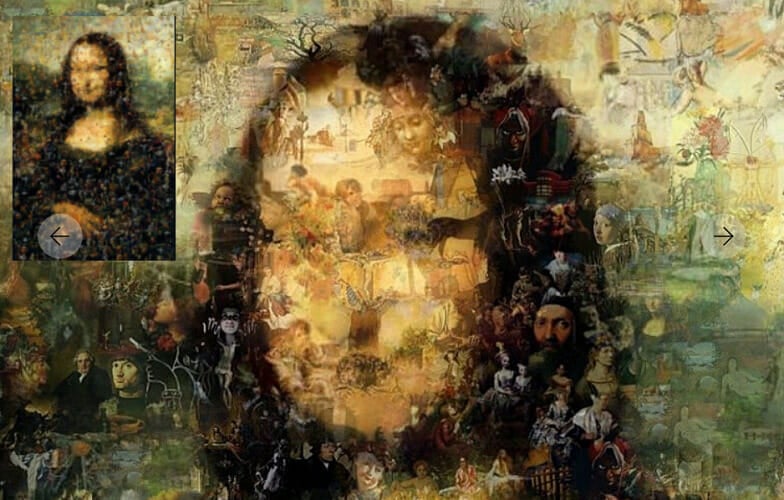

The processed photo can also be copied directly to the clipboard for sharing, or saved as a photo file. You can open a photo file, or copy a photo from the clipboard directly.
Free photo mosaic generator full#
Link to my full code implementation is attached at the end of this article. Mosaic or fill parts of an image with color to quickly hide a part of your photo. Here is the main part of the code to assign the relevant source image. The selected source image for the corresponding pixel ‘batch’ is resized into a tensor with size k. Assign relevant source image to each pixel ‘batch’ So, if the target image’s size is 300x100, then the zeros tensor’s size is (300x50)x(100x50). I myself decided to initialize the zeros tensor with size 50x50 ( k) bigger than the target image’s size. One way to solve this is by initializing the zeros tensor with a bigger size ( k times bigger). No worries! We as a human are blessed with creativity! Then, we assign each of the pixels with our selected source image that has been resized into a 1x1x3 tensor.īUT it’s not a wise approach! If we resized our source image into that very tiny tensor, then there’s so much loss of information there. We can simply initialize the tensor with size same as the target image. One thing to be highlighted here is the size of the zeros tensor. Notice that when batch_size=1, ‘Pixel Batching’ approach is the same as the brute-force approach.Īfter the list of relevant filenames is generated, now we have to initialize a zeros tensor which will be used as the ‘container’ of our mosaic image. You can see the below figure to have a better understanding of how this approach works.

I named this approach as ‘Pixel Batching’ approach. Rather than finding a relevant source image for each of the pixels, we can just try to find a relevant source image for each ‘batch’ of the pixels. Cons: You will get watermarks after processing the image. A good number of mosaic effect editing options before processing.
Free photo mosaic generator download#
3.Click on Download Sample once the application has displayed the output. If you realized, this is a very brute-force approach. 2.Set the Rows and Columns as per your choice and click on Generate Mosaic.

Then, choose the one with the lowest RMSE value. It works on devices directly in the browser without signing in. This is an Online Photo Mosaic Maker, so you don’t need to download any pair or free photo mosaic software. We can simply measure the RMSE ( Root Mean Squared Error) between the RGB vector of each target image’s pixel with the RGB vector from our database. This open-source Mosaic Maker is a free, fast and easy way to create mosaics from your images and print them anywhere. How can we know which image is ‘relevant’? Given the average RGB dataset and the target image, the first thing we have to do is generating a list of relevant source image filenames for each of the target image’s pixels. Generate a list of relevant filenames for each pixel ‘batch’


 0 kommentar(er)
0 kommentar(er)
